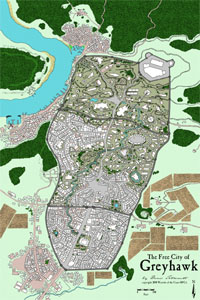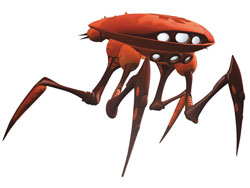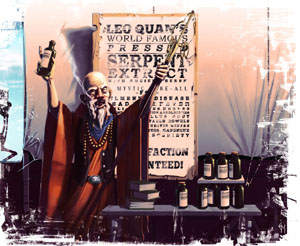This is a simplified method for handling encumbrance in OD&D and is designed to completely replace the existing encumbrance system. It’s indebted to both Delta’s D&D Hotspot and Lamentations of the Flame Princess. I’ll be posting full design notes in a few days.
Encumbrance, measured in stones carried, determines how much a character’s equipment slows them down, as shown on the table below:
| Encumbrance | Movement |
|---|---|
| up to 5 stones | 12" |
| up to 7 stones | 9" |
| up to 10 stones | 6" |
| up to 20 stones | 3" |
This can be conveniently thought of as the 5-10-20 rule (which corresponds to the maximum movement rates of 12”, 6”, and 3”).
Mounts and Mules: Can carry three times as much, following a 15-30-60 rule. (The base movement for mounts and mules are given in Volume 2: 24″ for a light horse; 18″ for a medium horse; 12″ for heavy horses, draft horses, and mules.)
WEIGHT BY STONE
To determine the number of stones carried by a character, simply consult the table below.
| Item | Weight in Stones |
|---|---|
| Heavy Armor (Plate-type) | 5 stones |
| Medium Armor (Chain-type) | 3 stones |
| Light Armor (Leather-type) | 1 stone |
| Shield | 1 stone |
| Weapon | 1 stone |
| Weapon, light | Misc. Equipment |
| Ammunition | Misc. Equipment |
| Miscellaneous Equipment | 1 stone per 5 bundles |
| Stowed Weapons | 1 bundle |
| Heavy Items | 1 or more stones |
| Light Clothing / Worn Items | 0 stones |
| 150 coins or gems | 1 stone |
| Weight of a Man | 12 stones |
Miscellaneous Equipment: Up to twenty items of the same type (scrolls, arrows, potions, rope) can be bundled together for the purposes of encumbrance. Items of different types aren’t bundled when determining encumbrance.
Stowed Weapons: Stowed weapons have been compactly stored in a way which makes them more difficult to draw (but easier to carry). Stowed weapons must be retrieved before they can be used, but they only count as 1 stone per 5 weapons.
Heavy Items: Anything weighing more than roughly 10 pounds can’t be effectively bundled. Estimate a weight in stones (about 10-20 pounds to the stone). When in doubt, call it a stone.
Clothing / Worn Items: Worn items don’t count for encumbrance, unless the individual items would qualify as heavy items.
Weight of a Man: A human can generally be assumed to weigh about a dozen stones. Halflings weigh only 2 stones. (Your own weight does not count towards your encumbrance.)
CONTAINERS
Weapons are assumed to be in sheaths, armor is worn, and you might have a wineskin or two strapped to your belt. But since there’s a limit to how much you can hold in your hands, everything else you’re carrying needs a place to live. As a rule of thumb, containers can carry:
| Container | Capacity |
|---|---|
| Belt, Pouch | 1/2 stone |
| Sack, Small | 1 stone |
| Sack, Large | 2 stones |
| Backpack | 3 stones |
| Backpack, Large | 5 stones |
Empty containers count as miscellaneous equipment. Containers being used to carry items don’t count towards encumbrance.
Larger sacks (often referred to as “loot sacks”) are also possible, but these cannot generally be stored on the body. They must be carried in both hands.















